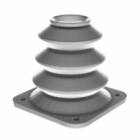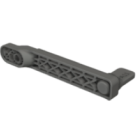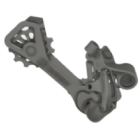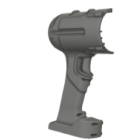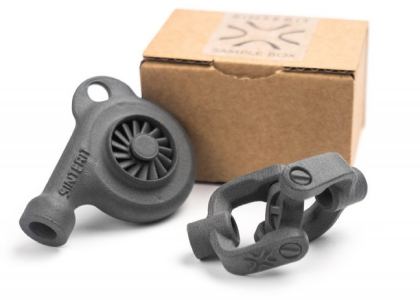How to metal plating 3D prints
Metal plating is one of the most advanced and visually striking post-processing techniques available for 3D printed parts. It not only enhances the appearance of the print — adding a real-metal finish that simulates brass, nickel, copper, or chrome — but also dramatically improves mechanical properties such as strength, rigidity, and even thermal or electrical conductivity. For both aesthetic and functional applications, metal plating 3D printed parts is a powerful option.
The process requires precision, chemical knowledge, and well-prepared surfaces. When done right, it transforms lightweight plastic parts into metallic-looking components that rival CNC-machined metal — both visually and functionally.
What is metal plating in 3D printing?
Metal plating, or electroplating, is a post-processing method where a metal layer is chemically bonded to the surface of a 3D print. The base part is typically non-conductive (like PLA, ABS, or nylon), so the process begins with a conductive coating. Once the surface can carry current, metal ions in a solution are attracted to it via electrochemical deposition, gradually building up a metallic shell.
This 3D plating process can be used for purely decorative purposes or to improve wear resistance, shielding, and durability. The most commonly plated metals include nickel, copper, and chrome, though others like gold or silver can be applied for specific use cases.
Key steps in the metal plating process
The full metal plating process for 3D prints involves several critical steps, each of which directly affects the outcome.
- Surface preparation
The print must be completely smooth and clean. This often involves sanding, polishing, and cleaning to remove any oils or particulates. For high-quality plating, surface imperfections must be minimized, as the plating process will highlight them.
- Conductive coating application
Since most 3D prints are made from non-conductive polymers, a conductive base coat is applied. This can be a spray-on silver or graphite-based solution, or a dip in a conductive lacquer. This layer allows current to pass through the surface during plating.
- Electroplating
The part is submerged in a plating bath with metal salt solution (like copper sulfate for copper plating) and connected to a power source. A metal anode of the plating material completes the circuit. Over time, the metal ions bond to the part’s conductive surface, forming a thin but solid metal shell.
This technique is especially effective for parts printed with SLA, SLS, or high-resolution FDM, where surface detail is well preserved.
Choosing the right 3D print for plating
Not all prints are ideal candidates for metal plating. Geometry plays a key role — deep cavities or enclosed spaces may trap plating solution or create uneven deposition. It’s important to design with post-processing in mind if you plan to metal plate a part.
Some materials like PA12, ABS, and resin prints are commonly used because of their surface smoothness and compatibility with conductive base coatings. On the other hand, rough FDM prints may require more prep work to reach acceptable quality.
The metal plating 3D printed parts technique is also more effective when the part has relatively thick walls and can structurally support the added weight and stress of the plated shell.
Benefits of metal plating 3D prints
When executed correctly, metal plating 3D prints offers multiple benefits beyond aesthetics:
- improved strength and stiffness — especially in structural parts,
- enhanced durability — resistance to abrasion and wear,
- electrical conductivity — enabling EMI shielding or low-voltage applications,
- heat resistance — the metal shell improves thermal stability,
- professional appearance — for product mockups, prototypes, and final parts.
This makes the process especially useful in industries like consumer electronics, automotive, aerospace, and design.
Alternative plating techniques
For those who don’t have access to full electroplating setups, alternative methods exist:
- Cold spraying or metallic paints can simulate the look of plating without the chemical process, though they offer little functional benefit.
- Electroless plating (like nickel-boron or nickel-phosphorus) works without electricity and is more uniform in coating complex shapes.
- Vacuum metalizing is used for lightweight decorative applications but is limited to specific geometries and materials.
Summary
Metal plating 3D printed parts is a highly effective way to elevate both the look and performance of your prints. While the process requires surface preparation, conductive coating, and chemical handling, the results are often well worth the effort. From functional improvement to visual transformation, metal plating 3D prints offers a unique set of benefits rarely achieved by other post-processing methods. Whether you’re prototyping enclosures, building functional tools, or simply making something beautiful — adding real metal to your parts opens up an entirely new level of design potential.
Explore also
- Removing supports from 3D prints
- Sanding 3D prints
- Polish 3D printed
- Sandblasting 3D prints
- How to fill gaps in 3D prints
- Priming 3D prints
- How to paint 3D print
- How to foiling 3D prints
Related categories




